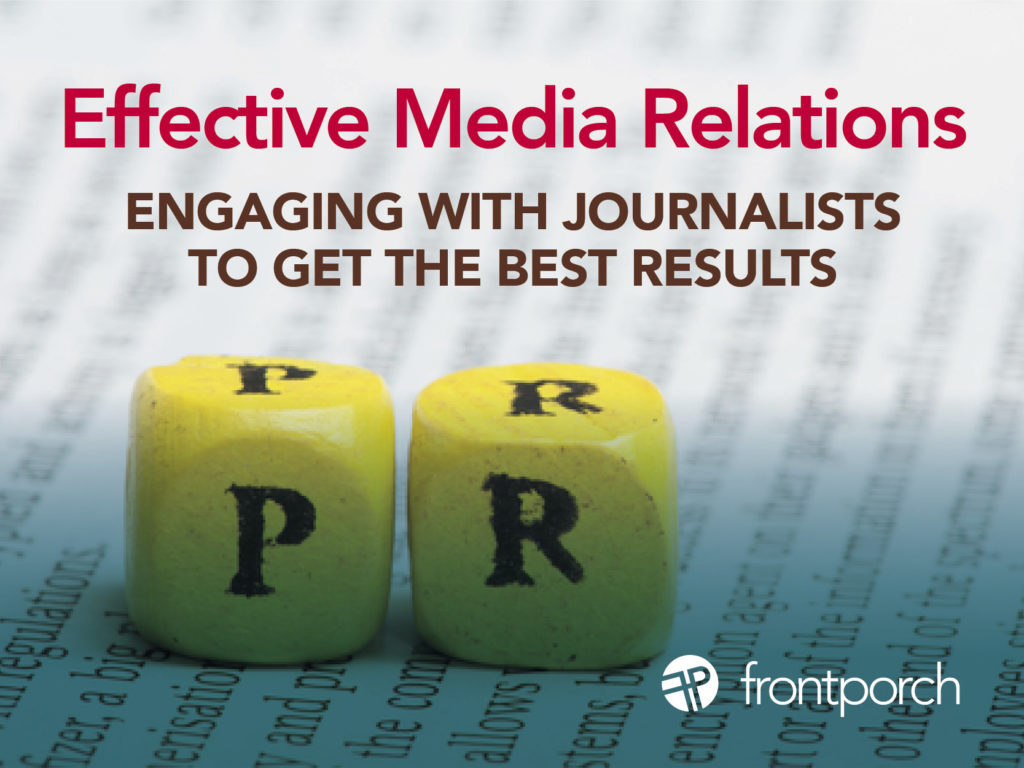
Media relations results require more than luck.
As a public relations professional, there’s no better feeling than seeing a client featured in a news story. There’s an exhilaration when an idea you’ve pitched appears in a magazine, newspaper, radio or the coveted TV spot. An earned media placement will impact a client’s awareness — and hopefully — their bottom line.
However, pitching isn’t easy. With fewer journalists, swifter news cycles and an extraordinary number of media outlets, communicators need to be savvy and strategic about formulating and targeting pitches. Muck Rack reports that there are now nearly 6 PR pros for every one journalist.
A 2021 Muck Rack survey stated that 34% of PR pros said finding and interacting with journalists is one of their biggest challenges. And 59% of journalists view their relationship with PR pros as mutually beneficial, but not quite a partnership. This decreased from 64% in 2020. Only 6% view it as a partnership.
Why is there such an inequity between PR professionals and journalists?
It’s no mystery that PR pros can’t do their media relations jobs successfully without journalists. And journalists depend on Public Relations outreach, too.
“I get roughly 300 emails a day. Most of the time, I read a subject line and that’s it. There’s just simply too many emails every day from publicists to be replying to each one. I can probably count on one hand the amount of general PR pitches I’ve responded to over the past few years. What they all have in common is they were targeted at BuzzFeed and me specifically. The publicist knew who I was, what kind of stories I write and was able to speak to this and why their pitch fit in line with that. They also know what BuzzFeed News is (hint: it’s not the same as BuzzFeed!) and why their story was of interest to our readers. It’s all obvious stuff, but you have to tailor your pitch like you would a cover letter for a job application.”
—David Mack, deputy director for breaking news at BuzzFeed News (source Muck Rack)
Personalization is key to getting a reporter’s attention.
It’s important to remember that each reporter is unique. In order to successfully connect with members of the media, know who they are and what they prefer when it comes to pitching. In Muck Rack’s Annual Journalist Survey, reporters cited lack of personalization as the number one reason they immediately reject pitches.
Writing the ideal pitch will not have “legs” if it is not strategically targeted. A political writer does not want to profile a new restaurant (unless the chef is a former president). An investigative journalist probably will not respond to a pitch about what’s trending in the fashion world. Educate yourself on a reporter’s areas of interest and get to know their point of view. Familiarize yourself with their writing style and how they communicate with their audience. Make each email distinctive to the individual. Remember that the ultimate goal is to establish or continue a relationship with the journalist.
Customize your pitch to their medium.
A wide-ranging PR campaign can be incredibly time consuming. Sending an initial mass email to all news outlets is, at times, the only course of action. However, this approach does not embolden coverage unless it is a very widely known product and/or personality. If possible, customize the pitch to the medium. When pitching a television producer, send clips or b-roll and include camera ready art to a print outlet. Reference the assets and describe how the visuals will enhance an interview or feature. If you want a reporter/editor/producer to accept your pitch, it needs to intrigue them — and contain something that that will engage their audience.
The media relations process — what happens next?
After sending a pitch, be respectful and allow the reporter enough time to decide if they are interested in covering the story. Give them a few days to review the pitch, and then follow up via email. If you don’t hear from them after a follow-up, assume they aren’t interested.
If a pitch is accepted, be sure to thank the reporter and share their story online. A share goes a long way, especially in a world where more reporters are being evaluated based on the success of their stories — 62% of journalists say they track how many times their stories are shared on social media.
